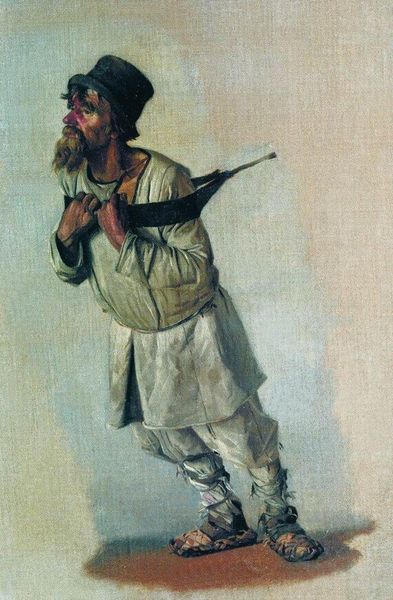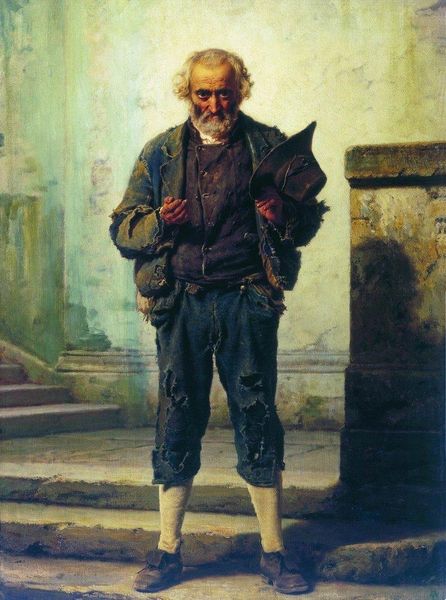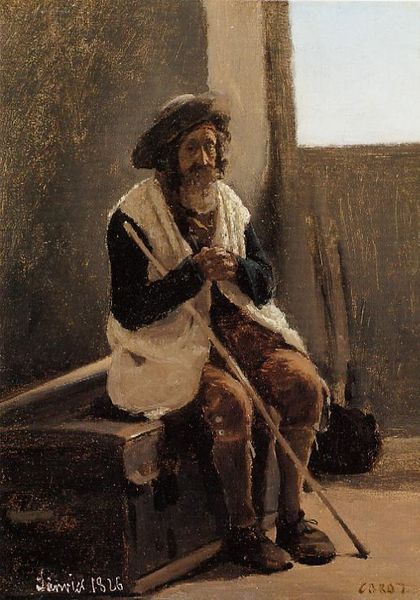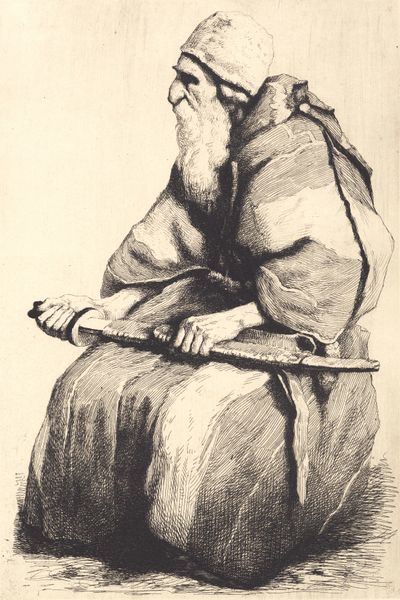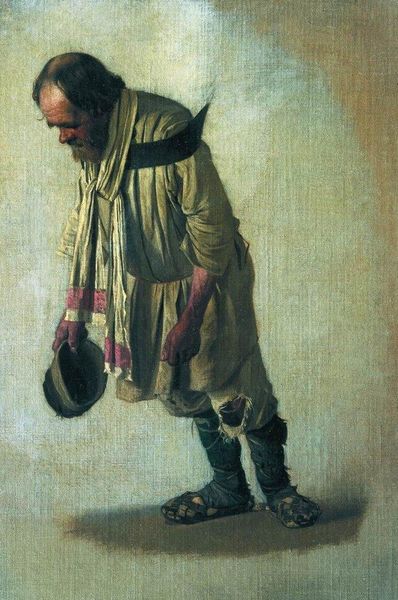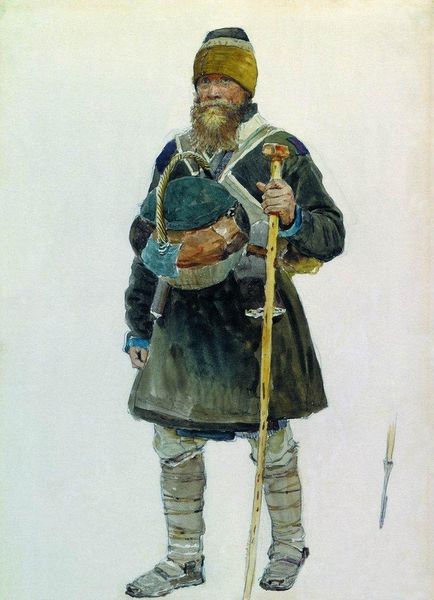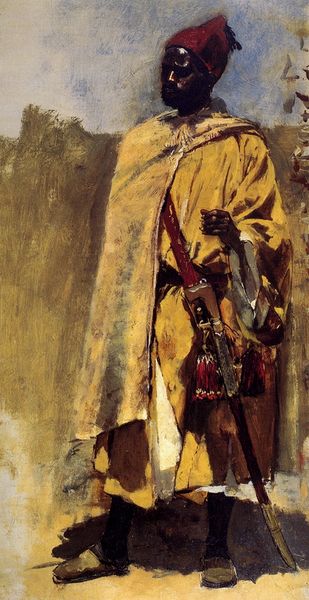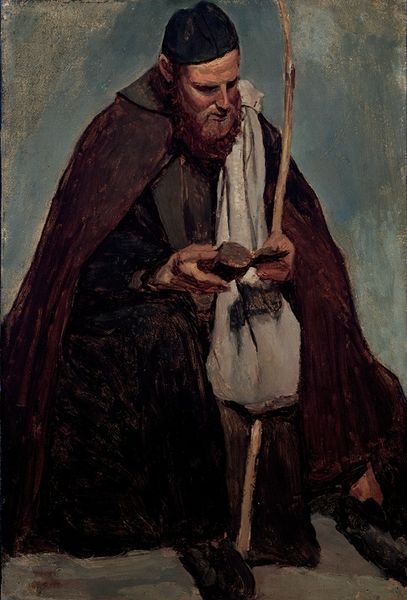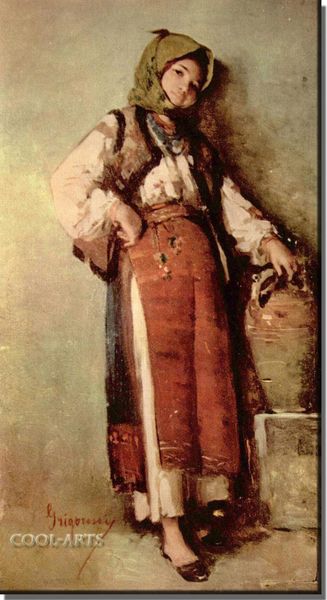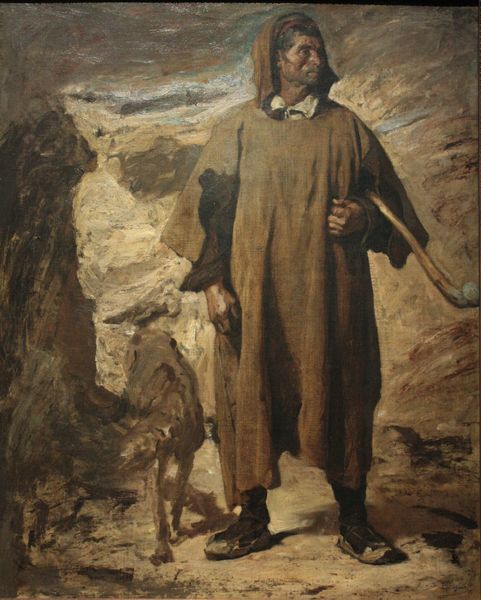
painting, oil-paint, impasto
#
portrait
#
flâneur
#
painting
#
impressionism
#
oil-paint
#
figuration
#
impasto
#
genre-painting
#
modernism
#
realism
Copyright: Public domain
Curator: Oh, wow, heavy. In a melancholic way. All muted browns and greys… Makes you feel the weight of something, doesn't it? Editor: Indeed. This is Edouard Manet's "The Ragpicker," painted in 1869. It hangs here at the Norton Simon Museum. What draws me in immediately is the social commentary, so evident and raw. Curator: Commentary, sure, but it’s the pathos that gets me first. Look at the slump of his shoulders, the way he gazes down. What's in that little pile? Is that all he's got? Editor: Symbolically rich, wouldn't you agree? The ragpicker was a common figure in Parisian life, collecting refuse. But Manet elevates him, turning the castoff into a commentary on… society discarding people, perhaps. Note the halo of darkness that surrounds him. Curator: Maybe. Or maybe Manet just saw a dude trying to make a living. I mean, his face is almost hidden. And the brushwork is so… loose. Is it even finished? He’s got that cloak flung over his shoulder, a staff to support him, the rip in the jeans. It's life, messy and unvarnished. Editor: The rip becomes a focal point! It mirrors the larger tears in the social fabric. The impasto technique Manet uses emphasizes texture. It isn’t simply rendering clothes but suggesting years of wear, the weight of survival etched into the very fabric of the painting. And yes, that averted gaze becomes a powerful symbol of marginalization, his humanity obscured. The darkness hides who he is, and represents what happens when we deny people space and empathy. Curator: Alright, I see that. It's hard to look away from that darkness when you see what it represents! Manet, with his subtle shifts, keeps layering those stories. The Ragpicker makes a connection – he holds the history of use. In that, there's meaning and humanity we often forget. Editor: Precisely! And, you know, these images persist – reminding us that every person we encounter, even those at the edges, carries their own profound story and complex symbolism that contributes to the depth and understanding of collective memory.
Comments
No comments
Be the first to comment and join the conversation on the ultimate creative platform.

